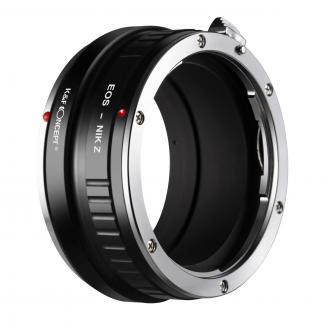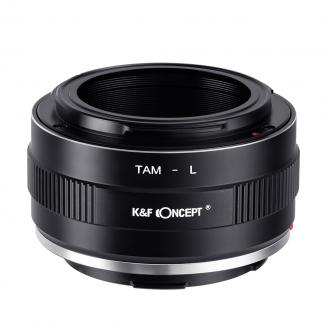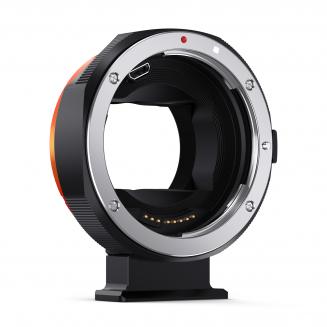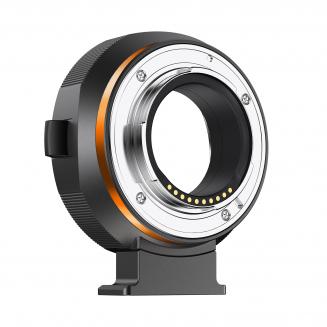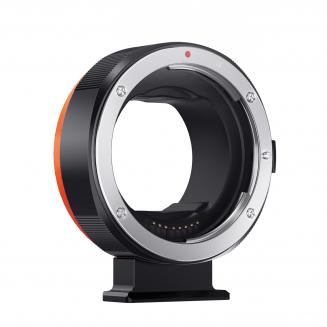Related Blog
Armasight 5x A-focal Lens With Adapter
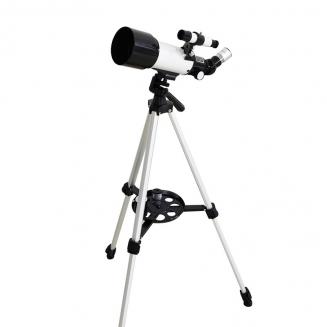
Travel Astronomical Telescope 70mm Aperture 400mm Focal Length with Carrying Bag, Adjustable Tripod, Phone Holder & Remote Control
$105.99
Save Instantly
Add to Cart
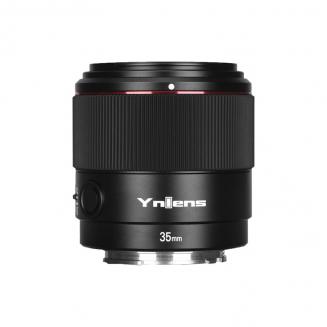
Yongnuo YN35mm f/2.0 DF DSM wide-angle fixed focal length lens for Sony E-mount full-frame cameras
$299.99
Save Instantly
Add to Cart

Yongnuo YN 14mm f/2.8N Super Wide-Angle Fixed Focus Lens Autofocus for Nikon F-mount Digital SLR Cameras
$759.99
Save Instantly
Add to Cart
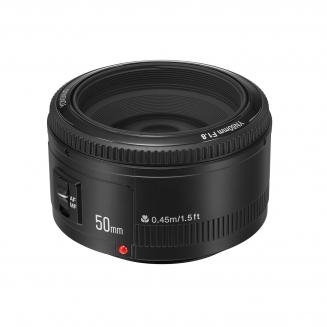
Yongnuo YN 50mm f/1.8 Standard Fixed Focus Lens Autofocus for Canon EF-mount EOS Cameras
$129.99
Save Instantly
Add to Cart
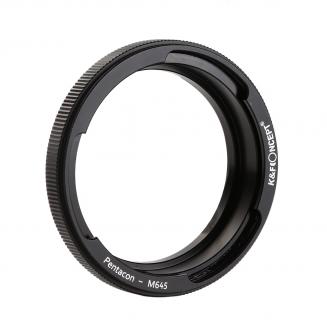
Pentacon 6 Kiev 60 Lenses to Mamiya 645 Lens Mount Adapter K&F Concept M27261 Lens Adapter
$34.99
Save Instantly
Add to Cart
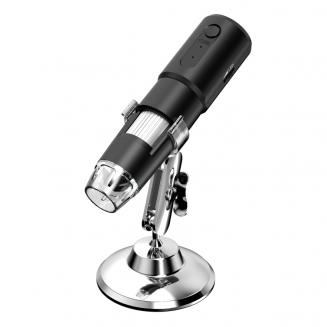
50X-1000X Wireless Digital Microscope work with Mobiles Tablets Windows Mac
$38.99
Save Instantly
Add to Cart
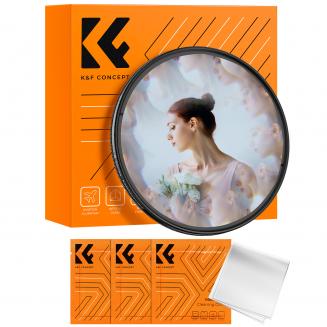
72mm Kaleidoscope Filter Special Effects Filter with 3pcs Vacuum Cleaning Cloths Nano B Series
$28.99
Save Instantly
Add to Cart

67mm Kaleidoscope Filter Special Effects Filter with 3pcs Vacuum Cleaning Cloths Nano B Series
$26.99
Save Instantly
Add to Cart
Related Reviews
Closeups
Got this for taking portraits Fixed focal lens tend rob sharper
13/12/2022
"Also Bought" Correction
Though I am just learning to use the camera I am fully convinced that it is a superior product.NOTE, however that the web page images of items "Also Bought" incorrectly includes a 55mm (diameter) Tiffen UV Protection Filter. This is not the correct size for 18-55mm focal length lens! You need 58mm filter size for this lens and also for the 55-250mm focal length lens. This misleading situation lead to misordering 55mm UV and Polarizing filters that had to be returned. Since these were gifts, the distant buyer will get a refund, or replacement filters(?) instead of sending replacements to me. I think filter size should be shown next to the camera to assure that buyers order the correct accessories, 58mm here. I do not know whether this problem repeats on other camera models.
01/09/2022
Very pleased
Very pleased with picture results as I use it to stream video. Perfect focal length and lens quality
29/03/2022
Knowledge is everything.
I like the fact that you can upgrade all of the parts if you so desire. I added a 5x barlow lens and soon filters.
24/02/2022
You can't afford not to buy one
Prime lenses are nearly always better than their zoom counterparts at equivalent focal lengths.I previously owned the last generation of this lens, and found that I was using it more than my kit lens. It was sharper, faster, and gave me better results, and losing some focal range was an acceptable sacrifice.This new version is much easier to focus as they're moved the focus ring behind the front element. Unfortunately, the focus is motor driven and the camera must be on and engaged to focus the lens.My images have been sharp, with great contrast and good bokeh.I was considering the 50mm f/1.4, but all research I was able to find showed that there wasn't much advantage aside from the additional available light. Plus you could buy a few of these for the same cost...If you only have your kit lens, and you never shot with any old manual SLRs (where fast 50mm lenses were king), you owe it to yourself to pick one of these up. They're a lot of fun, and the image quality will shock you when you remind yourself you only spent $120 on the lens
18/10/2021
Good buy
With a base magnification of 48x, getting a good 2-5x Barlow lens to go along with it will have you all set.
21/08/2021
Boring in all the right ways to be pretty dang goo
35mm focal length on full frame-- not the most extreme wide angle nor a crazy long focal length that isolates your subject and gets rid of everything else. Just... normal-ish. Easier to use for walk around stuff than 50mm in my experience, but depending on your preferences ymmv.Image stabilized... but in my experience it hasn't made enough of a difference to change my shooting habits.f/1.8, usable. Not gonna blur the heck out of everything on a lens this wide but it allows shooting in pretty dark conditions.Decently sharp, not incredibly so.SLOW autofocus, but it works.Reasonably small.Good close focusing distance.It all adds up to a lens that doesn't particularly excite me to use, but one that I could leave on my camera all the time and not be disappointed by. It just sorta works and the only thing that regularly gets in the way is the slow autofocus motor.Would highly recommend a 3rd party lens hood for this, the Canon one isn't anywhere near as big as a 35mm can benefit from.
17/08/2021
My walkaround lens
The walkaround lens. This very topic leads to a heated discussion among DSLR photographers.First, determine your budget, focal length, and aperture needs.If you frequently find yourself zooming out to get everything in a frame, you will want a wide angle lens such as this. If you frequently find yourself zooming in, this is not the lens for you. On a full frame body such as Canon EOS 5D, this lens becomes ULTRA wide angle. On an APS-C crop body such as Digital Rebel XTi (which I used for this review), it becomes MEDIUM wide angle. But thanks to 1.6x crop factor, this lens expands to more usable 35mm equivalent focal length of 27 to 64mm.Second, audition the lens if you can.By definition, a walkaround lens should be relatively portable. At 1.1 lbs., Canon's EF 17-40mm f/4L USM is neither super light nor neck breakingly heavy. In fact, it weighs almost the same as Digital Rebel XTi -- really nice balance. The lens feels very solid with supreme build quality that only L-series lenses offer. Although this lens is weather proof and therefore sealed against liquid and dust, I strongly recommend getting a 77mm filter to protect the front lens element. With it, this lens is made to last.In terms of looks and feel, it doesn't get much better. Its rubberized full-time inner focus manual ring USM focuses smoothly, quietly, and quickly. Since it's inner focus, the lens will not extend beyond its metal casing whether you zoom in or out. The focus window shows focusing distance from 0.28 meter (0.92 feet) to infinity. The focal length marker indicates 17, 20, 24, 28, 35, and 40mm. The lens exudes quality from tip to tip.You may tolerate heavier lens or may not mind lesser build quality of cheaper lenses. A walkaround lens will be used very often, so make sure you will be comfortable with it.This lens is famous for saturated color and deep contrast. Its images are simply stunning. At 17mm wide angle, barrel distortion is noticeable but relatively mild. From 24mm to 40mm, its images are distortion free and perfectly suited at capturing people.Vignetting (corner darkness) is minimal with mild chroma abberrations (color shadows). At f/4 aperture, details become noticeably softer toward the edges. The center region is very sharp and at f/5.6, edges remain fairy sharp. Thanks to 7 diaphragm blades, this lens can produce very nice bokeh at 40mm (blur effects).One of the most cited weaknesses is the f/4 aperture. In my experience, a bump in the ISO speed and steady hands are all you need to take well focused images indoor. On the other hand, if you are shooting with very little amount of light, you might wish for f/2.8 or image stabilizer. Although the difference between f/4 and f/2.8 is just 1 stop, my other lens, Canon EF 24-70mm f/2.8L USM (too heavy to be my walkaround lens) easily outperforms in such challenging situations. But by and large, I was not handicapped by the f/4 aperture.Some of the main competitions (sorted by price):- Sigma AF 17-70mm f/2.8-4.5 DC macro: Good zoom range with macro, and generally solid performance if you can get a good sample. It does suffer from a bit slow focus mechanism, soft corner, and chroma aberrations. Works only with EF-S mount.- Sigma 18-50mm f/2.8 EX DC: Very good value for f/2.8 aperture, but Tamron's 17-50mm is a bit better lens overall. Works only with EF-S mount.- Canon EF-S 17-85mm f/4-5.6 IS USM: This "traveler's lens" has a wider focal range than most wide angle lenses (widest among Canon) and is equipped with an image stabilizer. While it is a Jack of many trades, it is the master of none. Every lenses on this list will perform better at particular focal length. Then again, none of the lenses on this list has as wide focal range. It is famous for extreme barrel distortion at 17mm and chroma aberrations. Works only with EF-S mount.- Tamron SP AF 17-50mm f/2.8 Di II LD Aspherical (IF): This is the most direct competitor. It takes sharper images with faster aperture while costing less. Both the build and focus mechanism are significantly worse, but should be good enough for many. Works only with EF-S mount.- Canon EF-S 17-55mm f/2.8 IS USM: This is THE reference, if you can afford it. Its images have razor sharp details and great performance all around (minus vignetting, which is typical of EF-S lenses). The build quality is worse than L-series but still pretty good. Works only with EF-S mount. This is the best EF-S lens hands down.- Canon EF 16-35mm f/2.8L USM: One of the most expensive wide angle zoom lenses. It's larger and heavier, but has f/2.8 aperture.This is how Canon EF 17-40mm f/4 USM stacks up.Pros:- Among the very best build quality.- Excellent, buttery smooth, super fast front-focus system.- Top notch color and contrast. Very sharp center resolution.- Almost non-existent vignetting, generally low distortion, and well controlled chroma abberrations.- Ideal weight and size for walkaround purposeCons:- Edge softness at f/4 aperture.- Narrower focal length than most competing lenses.- Slower than some third party lenses.All in all, this is an excellent wide angle walkaround lens. It may not offer the most bang for the buck, but if you value full frame compatibility (EF lens mount) and excellent build quality, this is the default choice. This lens comes with a nice pouch and a lens hood. I find the hood to be somewhat ridiculously shaped and because the lens is resistant to flare, I do not use it often when shooting outdoor.
11/08/2021
Related Faq
Q
Does the focal length change?
A
No, no focal length or aperture change. Works absolutely like the Canon original that I use.
Q
Q: Can the filter avoid the black cross phenomenon?
A
Answer: By design we can avoid the use of the filter in non-wide angle lens will not have dark corners, if your focal length is less than 24mm still may back to produce.
Q
Is the bigger the multiple, the clearer you can see?
A
Of course, the multiple is not the only one, it mainly depends on the comprehensive factors such as aperture and focal length. For example, if the windows of a house are large, the light will be natural and the view will be clear, the same reasoning.
Q
Why camera indicated “lens is not properly installed”?
A
If your camera indicated "lens is not properly installed", please modify the camera menu settings. Usually called the "release the shutter the lens is not installed", you can modify the settings to allow. Specifically refer to the camera manual.Following are some examples:
-
MFT(M4/3 mount camera)'Lens Not Found' - Warning Message Appears
For Panasonic Lumix:
The camera needs to be set to function without a MFT-Mount lens attached. You can do this by changing the following camera setting:
'Menu' -> 'Custom Menu 5' -> 'Shoot W/O Lens' -> 'On'
(Exact naming and location of this option may change depending on camera model)
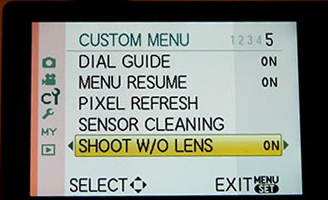
-
Fujifilm X mount camera, The camera needs to be set to function without a GFX-Mount lens attached. You can do this by changing the following camera setting:
'MENU' -> 'SETUP' -> 'BUTTON/DIAL SETTING' -> 'SHOOT WITHOUT LENS' -> 'ON' (Exact naming and location of this option may change depending on camera model) Choose ON to enable the shutter release when no lens is attached.
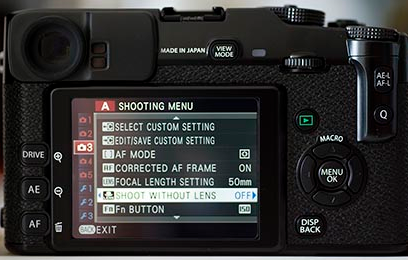
-
Sony E mount camera, 'No Lens Attached' - Warning Message Appears
The camera needs to be set to function without a E-Mount lens attached. You can do this by changing the following camera setting:'Menu' -> 'Setup' -> 'Release w/o Lens' -> 'Enable'
(Exact naming and location of this option may change depending on camera model)

-
Nikon 1-Series mirrorless camera , 'Check lens. Pictures can only be taken when a lens is attached' - Warning Message Appears
With a Nikon 1-Series camera (such as the J2), you will need to make sure the camera is in 'Manual' exposure or shooting mode and the focus selection is also set to manual. When in any other mode the camera tries to take control of the lens which is not possible as the adapter does not have any contact with the camera circuitry, so you get the lens check warning as the camera does not think there is a lens attached.

-
'EOS M mirrorless camera ,'No Lens Attached' - Warning Message Appears
The camera needs to be set to function without a EF-M Mount lens attached. You can do this by changing the following camera setting:
'Menu' -> 'Custom Menu' -> 'Custom Function 7' -> Select 'Release shutter w/o lens'
(Exact naming and location of this option may change depending on camera model)

-
Konica Minolta:
For Konica Minolta and "No Lens Attached"
Custom Menu 3
First item "Shutter Lock"
Set it to "Off: no lens"
(Depending on camera model "Shutter Lock" May be in different menu location)

-
'Samsung NX 'No lens.' - Warning Message Appears
The adapter is designed to trigger a sensor inside the camera body itself so no setting needs to be changed. If the error message is coming up with one of our adapters attached, then it is possible that the adapter is not hitting that sensor the way that it should. Usually rotating the adapter slightly in the mount, or un-mounting and remounting the adapter clears the problem with no further action needed. If that doesn't solve the problem, then the best course of action would be to swap out the adapter you have with a replacement.
Q
The filter can avoid the black cross phenomenon?
A
By design we can avoid the use of the filter in non-wide angle lens will not have dark corners, if your focal length is less than 24mm may still return to produce.
Related Video
UNBOXING k&f concept lens adapter + Minolta X 700!
New design lens adapter series from K&F Concept
K&F M10111 M42 Lenses to Fuji X Lens Mount Adapter
Related Feature
Focal Teleconverter Vs Lens Adapter
Camera Lens Adapter Focal Length
Lens Manual Focal Stop Adapter
C Mount Lens Focal Length
E Mount Lens Focal Distance
Lens Adapter To Make Focal Length Longer
Lens Turbo/speedbooster Focal Reducer Adapter
50 Focal Length Adapter For Nikon
Back Focal Distance Of C-mount Lens
Canon Ef-m Mount Competble
Feature You May Like
Related Products

